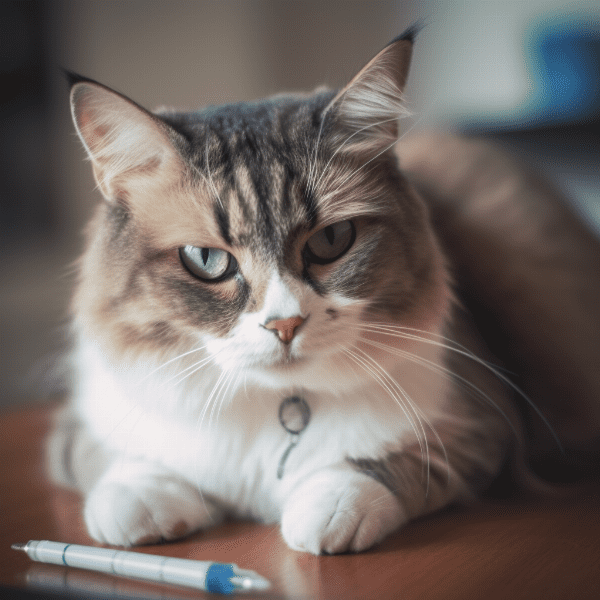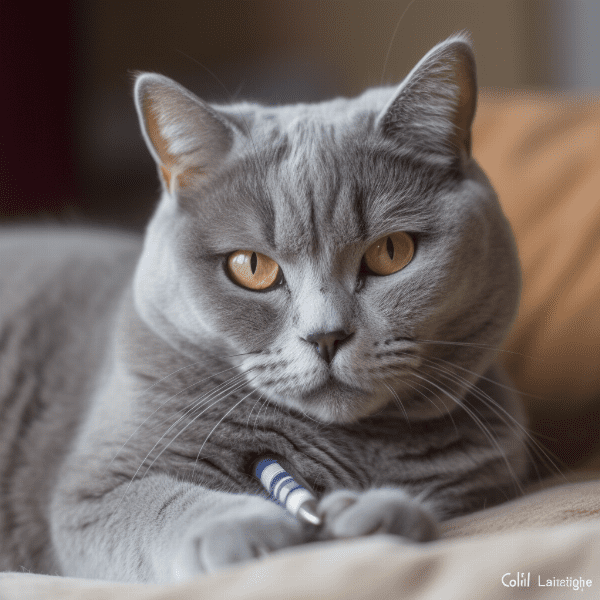Table of Contents
- Understanding Low Blood Sugar in Cats
- Symptoms of Low Blood Sugar in Cats
- Causes of Low Blood Sugar in Cats
- Diagnosing Low Blood Sugar in Cats
- Treatment Options for Low Blood Sugar in Cats
- Medications for Managing Low Blood Sugar in Cats
- Diet and Lifestyle Changes for Cats with Low Blood Sugar
- Monitoring Your Cat’s Blood Sugar Levels
- Preventing Low Blood Sugar in Cats
- When to See a Vet for Low Blood Sugar in Cats
Understanding Low Blood Sugar in Cats
Low blood sugar, or hypoglycemia, is a condition where the blood sugar levels in cats drop below normal levels. Blood sugar, or glucose, is the primary source of energy for the body’s cells. When blood sugar levels drop too low, it can result in a range of symptoms and can be a sign of an underlying medical condition.
How Low is Too Low?
In cats, normal blood glucose levels range from 80-150 mg/dL. A blood glucose level below 70 mg/dL is considered low and may cause hypoglycemia symptoms. However, the threshold for low blood sugar may vary depending on the individual cat’s health and medical history.
- Insulin overdose or improper insulin dosage
- Prolonged fasting or lack of appetite
- Certain medications, such as antibiotics or heart medications
- Liver disease or other underlying medical conditions
- Tumors or other growths that interfere with glucose regulation
What are the Symptoms of Low Blood Sugar in Cats?
Symptoms of Low blood sugar in cats may vary, but common signs include:
- Weakness or lethargy
- Shaking or tremors
- Confusion or disorientation
- Seizures or collapse
- Loss of appetite or vomiting
If you notice any of these symptoms in your cat, it’s important to seek veterinary attention right away.
Conclusion
Understanding the basics of low blood sugar in cats can help pet owners recognize the signs and symptoms of this condition. While hypoglycemia can be a serious medical condition, it can often be managed with the help of a veterinarian. In the following sections, we’ll explore some of the ways pet owners can manage and prevent low blood sugar in cats.

Symptoms of Low Blood Sugar in Cats
Low blood sugar in cats can manifest in a variety of ways. Recognizing the symptoms of low blood sugar can help pet owners take quick action to prevent the condition from worsening.
Behavioral Symptoms
When a cat’s blood sugar levels drop too low, they may exhibit behavioral changes such as:
- Confusion or disorientation
- Restlessness or anxiety
- Seizures or collapse
These symptoms can be frightening for pet owners, but it’s important to remain calm and seek veterinary attention immediately.
Physical Symptoms
Low blood sugar in cats can also cause a range of physical symptoms, including:
- Weakness or lethargy
- Shaking or tremors
- Loss of coordination or balance
- Vomiting or diarrhea
- Changes in heart rate or breathing
If your cat exhibits any of these symptoms, it’s important to take them to the vet right away.
Long-Term Symptoms
If left untreated, low blood sugar in cats can cause long-term damage to the body. Some potential long-term symptoms of hypoglycemia include:
- Brain damage or seizures
- Liver disease or failure
- Kidney damage or failure
- Vision problems
Preventing and managing low blood sugar in cats is crucial for their long-term health.
Conclusion
Symptoms of low blood sugar in cats can be scary, but recognizing them early can help pet owners take quick action to prevent the condition from worsening. If you notice any behavioral or physical symptoms of hypoglycemia in your cat, it’s important to seek veterinary attention immediately. In the next section, we’ll explore some of the common causes of low blood sugar in cats.
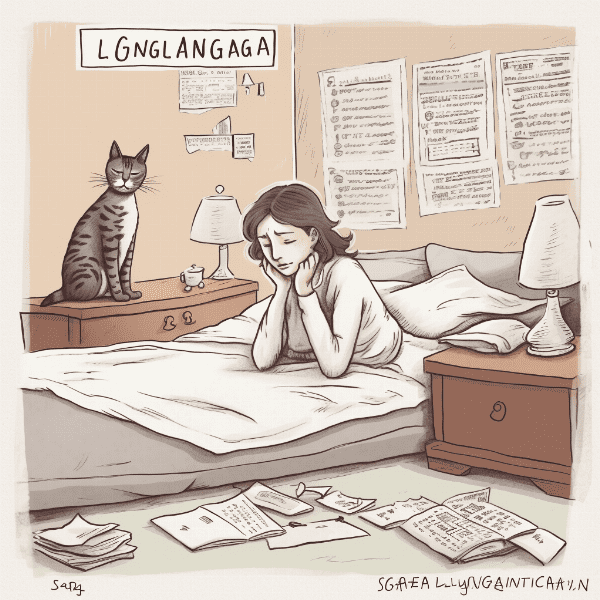
Causes of Low Blood Sugar in Cats
Low blood sugar in cats can have a variety of underlying causes. Understanding these causes can help pet owners take steps to prevent and manage hypoglycemia.
Insulin Overdose or Improper Insulin Dosage
For cats with diabetes, insulin injections are often necessary to regulate their blood sugar levels. However, administering too much insulin or not adjusting the dosage properly can cause blood sugar levels to drop too low.
Prolonged Fasting or Lack of Appetite
Cats who go too long without eating or who refuse to eat can experience hypoglycemia. This can occur if a cat is ill or stressed and doesn’t feel like eating, or if a cat is required to fast before a medical procedure.
Medications
Certain medications can cause low blood sugar in cats. Antibiotics and heart medications are known to lower blood sugar levels in some cases.
Underlying Medical Conditions
Hypoglycemia can be a symptom of an underlying medical condition, such as liver disease, pancreatic tumors, or Addison’s disease.
Tumors or Other Growths
In some cases, tumors or other growths can interfere with glucose regulation in cats, leading to low blood sugar levels.
Conclusion
Low blood sugar in cats can be caused by a variety of factors, including insulin overdose, prolonged fasting, medications, underlying medical conditions, and tumors. Understanding these causes can help pet owners take steps to prevent and manage hypoglycemia. In the next section, we’ll explore some of the ways hypoglycemia is diagnosed in cats.
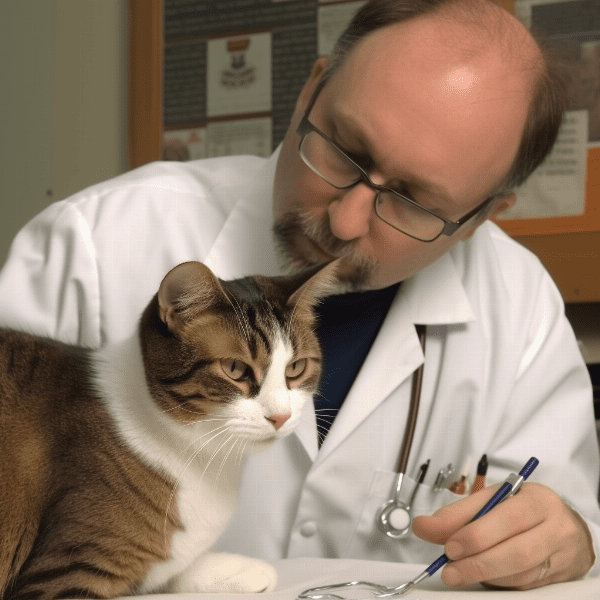
Diagnosing Low Blood Sugar in Cats
Blood Glucose Tests
One of the most common ways to diagnose low blood sugar in cats is through blood glucose testing. This involves taking a small sample of your cat’s blood and analyzing it to determine their blood sugar levels. If your cat’s blood sugar levels are below normal, they may have hypoglycemia.
Urinalysis
A urinalysis can also be helpful in diagnosing low blood sugar in cats. Urine samples can be tested for glucose, which may be present in the urine if blood sugar levels are low.
Additional Diagnostic Tests
In some cases, additional diagnostic tests may be necessary to determine the underlying cause of hypoglycemia. These tests may include imaging tests, such as ultrasounds or x-rays, or blood tests to check for underlying medical conditions.
Conclusion
Diagnosing low blood sugar in cats typically involves blood glucose testing and urinalysis. Additional diagnostic tests may be necessary to determine the underlying cause of hypoglycemia. If you suspect that your cat may have low blood sugar, it’s important to seek veterinary attention right away. In the next section, we’ll explore some of the treatment options available for cats with hypoglycemia.
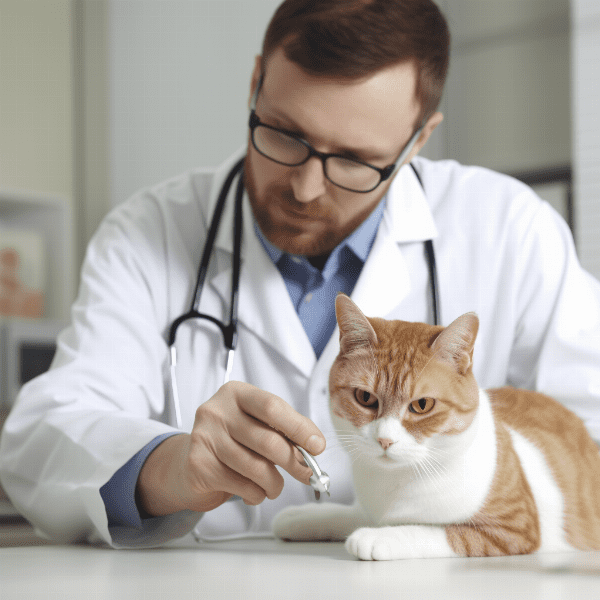
Treatment Options for Low Blood Sugar in Cats
If your cat has been diagnosed with low blood sugar, there are several treatment options that your veterinarian may recommend. The appropriate treatment will depend on the underlying cause of hypoglycemia.
Administering Glucose
In some cases, administering glucose can quickly raise your cat’s blood sugar levels. This can be done through intravenous (IV) fluids, oral medications, or a glucose gel that is applied to the gums.
Adjusting Insulin Dosage
If your cat’s low blood sugar is caused by insulin overdose or improper dosage, your veterinarian may adjust their insulin dosage or recommend a different type of insulin.
Treating Underlying Medical Conditions
If hypoglycemia is caused by an underlying medical condition, such as liver disease or a tumor, treating the underlying condition may help improve your cat’s blood sugar levels.
Changes in Diet and Lifestyle
In some cases, changes in your cat’s diet and lifestyle may be necessary to manage hypoglycemia. Your veterinarian may recommend feeding your cat smaller, more frequent meals, or switching to a high-protein, low-carbohydrate diet.
Conclusion
The appropriate treatment for low blood sugar in cats will depend on the underlying cause of hypoglycemia. Administering glucose, adjusting insulin dosage, treating underlying medical conditions, and changes in diet and lifestyle may all be recommended by your veterinarian. If you suspect that your cat has low blood sugar, it’s important to seek veterinary attention right away. In the next section, we’ll explore some of the medications that may be prescribed to manage hypoglycemia in cats.

Medications for Managing Low Blood Sugar in Cats
In addition to dietary and lifestyle changes, medications may also be prescribed to manage low blood sugar in cats. Here are some of the most commonly prescribed medications for cats with hypoglycemia.
Diazoxide
Diazoxide is a medication that is often used to treat insulinoma, a type of tumor that can cause low blood sugar in cats. It works by inhibiting the release of insulin, which can help prevent blood sugar levels from dropping too low.
Prednisolone
Prednisolone is a steroid medication that can be used to treat underlying medical conditions that may be causing hypoglycemia in cats. It works by reducing inflammation and suppressing the immune system.
Glucagon
Glucagon is a hormone that can be injected to rapidly raise blood sugar levels in cats. It works by stimulating the liver to convert stored glycogen into glucose.
Insulin
Insulin injections may be necessary to regulate blood sugar levels in cats with diabetes. It’s important to carefully monitor your cat’s blood sugar levels and adjust their insulin dosage as needed to prevent hypoglycemia.
Conclusion
Medications can be an important part of managing low blood sugar in cats. Diazoxide, prednisolone, glucagon, and insulin are some of the most commonly prescribed medications for cats with hypoglycemia. It’s important to work closely with your veterinarian to determine the appropriate medication and dosage for your cat’s specific needs. In the next section, we’ll explore some of the dietary and lifestyle changes that can help manage and prevent low blood sugar in cats.
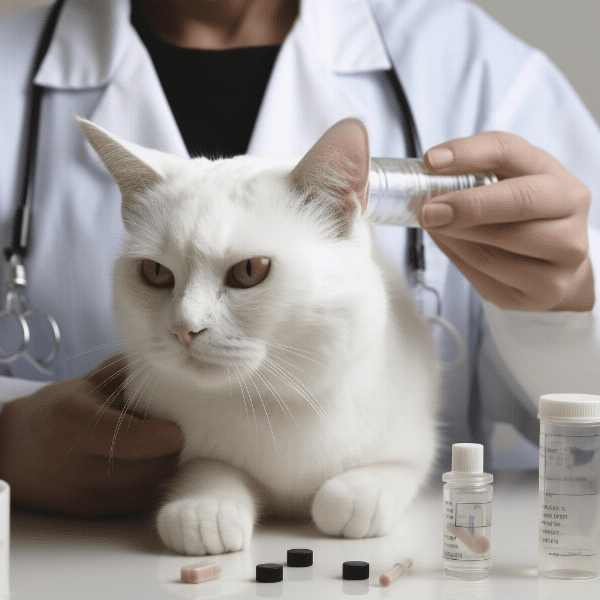
Diet and Lifestyle Changes for Cats with Low Blood Sugar
Diet and lifestyle changes can be an effective way to manage and prevent low blood sugar in cats. Here are some strategies that can help:
Feed Smaller, More Frequent Meals
Feeding your cat smaller, more frequent meals can help prevent drops in blood sugar levels. Try feeding your cat three to four small meals throughout the day, rather than one or two large meals.
Choose High-Protein, Low-Carbohydrate Foods
High-protein, low-carbohydrate diets can help regulate blood sugar levels in cats. Look for foods that contain high-quality sources of protein, such as chicken or fish, and avoid foods that are high in carbohydrates, such as grains or potatoes.
Avoid Prolonged Fasting
If your cat is required to fast before a medical procedure, make sure the fast is not prolonged. Cats who go too long without eating are at risk of hypoglycemia.
Encourage Exercise
Regular exercise can help regulate blood sugar levels in cats. Encourage your cat to play and engage in physical activity, but make sure to monitor their energy levels and adjust activity levels as needed.
Monitor Blood Sugar Levels
If your cat has a history of hypoglycemia, it may be necessary to monitor their blood sugar levels regularly. This can be done through at-home testing or by working closely with your veterinarian.
Conclusion
Diet and lifestyle changes can be an effective way to manage and prevent low blood sugar in cats. Feeding smaller, more frequent meals, choosing high-protein, low-carbohydrate foods, avoiding prolonged fasting, encouraging exercise, and monitoring blood sugar levels are all strategies that can help regulate blood sugar levels in cats. In the next section, we’ll explore some tips for monitoring your cat’s blood sugar levels at home.

Monitoring Your Cat’s Blood Sugar Levels
Monitoring your cat’s blood sugar levels is an important part of managing hypoglycemia. Here are some tips for monitoring your cat’s blood sugar levels at home:
At-Home Blood Glucose Testing
With guidance from your veterinarian, you can perform at-home blood glucose testing to monitor your cat’s blood sugar levels. This involves pricking your cat’s ear or paw and using a glucose meter to measure their blood sugar levels.
Keep a Log
Keeping a log of your cat’s blood sugar levels can help you and your veterinarian track any changes or patterns in their blood sugar levels over time. Make note of any unusual symptoms or behaviors your cat exhibits.
Regular Veterinary Visits
Regular veterinary visits are important for monitoring your cat’s blood sugar levels and overall health. Your veterinarian may recommend more frequent visits if your cat has a history of hypoglycemia.
Conclusion
Monitoring your cat’s blood sugar levels is crucial for managing hypoglycemia. At-home blood glucose testing, keeping a log, and regular veterinary visits can all help you and your veterinarian track your cat’s blood sugar levels and make necessary adjustments to their treatment plan. In the next section, we’ll explore some tips for preventing low blood sugar in cats.
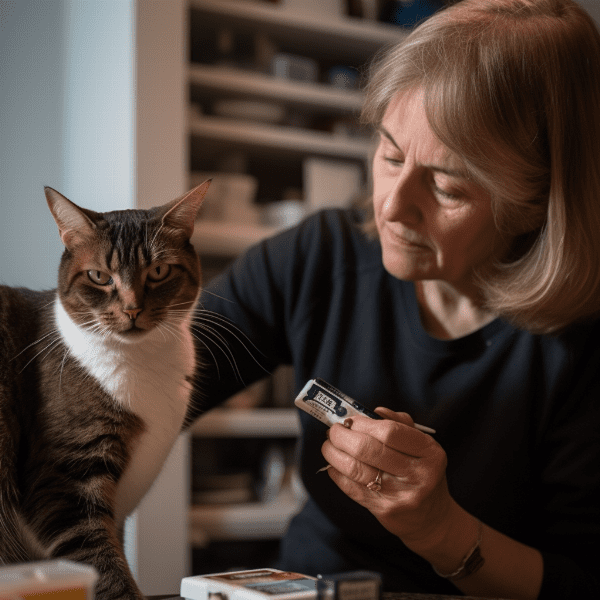
Preventing Low Blood Sugar in Cats
Preventing low blood sugar in cats is important for their overall health and well-being. Here are some tips for preventing hypoglycemia:
Stick to a Feeding Schedule
Feeding your cat on a consistent schedule can help regulate their blood sugar levels. Try to feed your cat at the same time every day, and avoid skipping meals.
Choose the Right Food
Choosing the right food can make a big difference in preventing hypoglycemia. Look for high-quality, high-protein foods that are low in carbohydrates.
Avoid Overfeeding
Overfeeding your cat can lead to weight gain and an increased risk of hypoglycemia. Stick to the recommended serving sizes and avoid giving your cat too many treats.
Monitor for Changes in Behavior
If you notice any changes in your cat’s behavior, such as lethargy or disorientation, it’s important to seek veterinary attention right away. These may be early warning signs of low blood sugar.
Conclusion
Preventing low blood sugar in cats is crucial for their overall health and well-being. Sticking to a feeding schedule, choosing the right food, avoiding overfeeding, and monitoring for changes in behavior are all important strategies for preventing hypoglycemia. If you suspect that your cat may have low blood sugar, it’s important to seek veterinary attention right away. With the right treatment and management strategies, cats with hypoglycemia can live happy, healthy lives.

When to See a Vet for Low Blood Sugar in Cats
If you suspect that your cat may be experiencing low blood sugar, it’s important to seek veterinary attention right away. Here are some signs that may indicate that your cat has hypoglycemia:
Disorientation
Cats with hypoglycemia may appear disoriented or confused.
Seizures
In severe cases, hypoglycemia can cause seizures in cats.
Increased Appetite
While increased appetite may seem like a good thing, it can actually be a sign of hypoglycemia in cats.
Unusual Behavior
If your cat is exhibiting unusual behavior, such as hiding or avoiding interaction, this may be a sign of low blood sugar.
Conclusion
If you suspect that your cat may have low blood sugar, it’s important to seek veterinary attention right away. Lethargy, disorientation, seizures, increased appetite, and unusual behavior are all signs that your cat may be experiencing hypoglycemia. With prompt diagnosis and treatment, cats with hypoglycemia can live happy, healthy lives.


